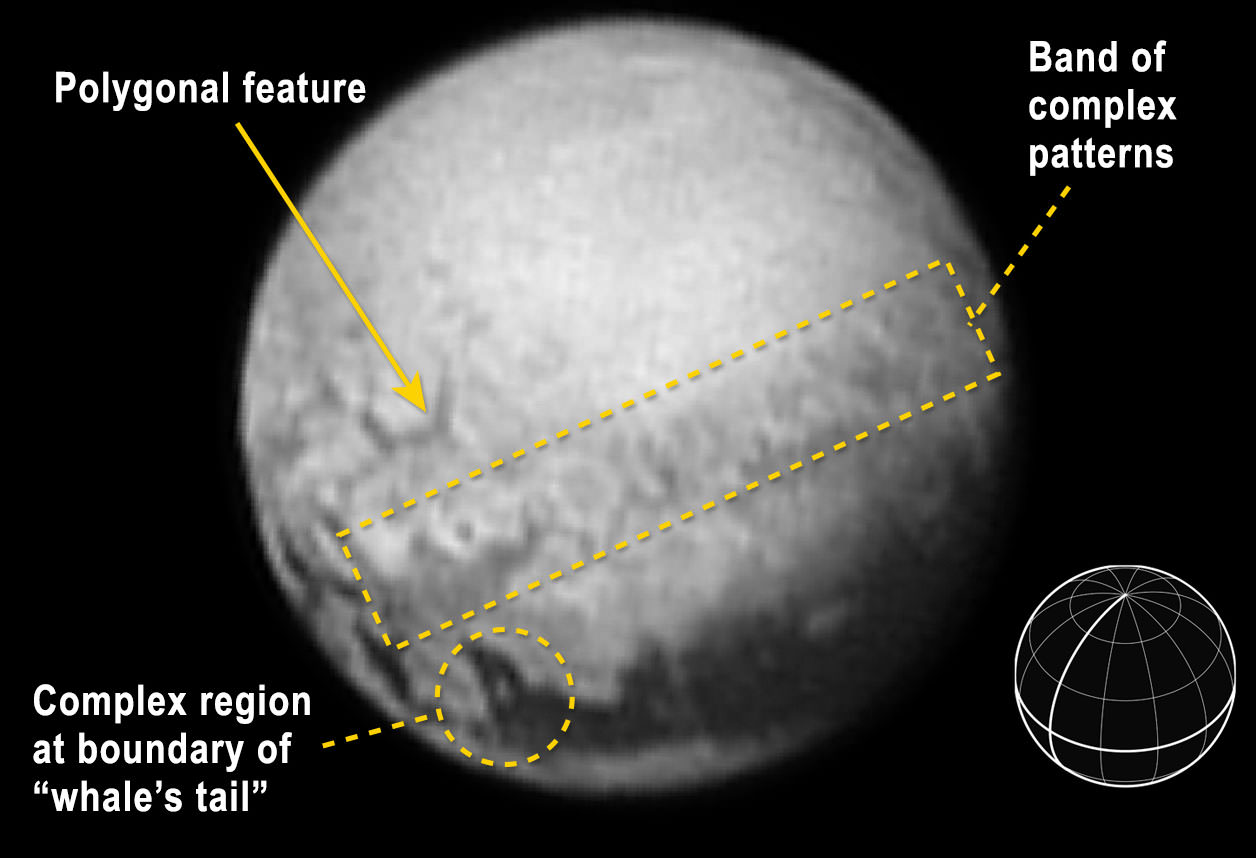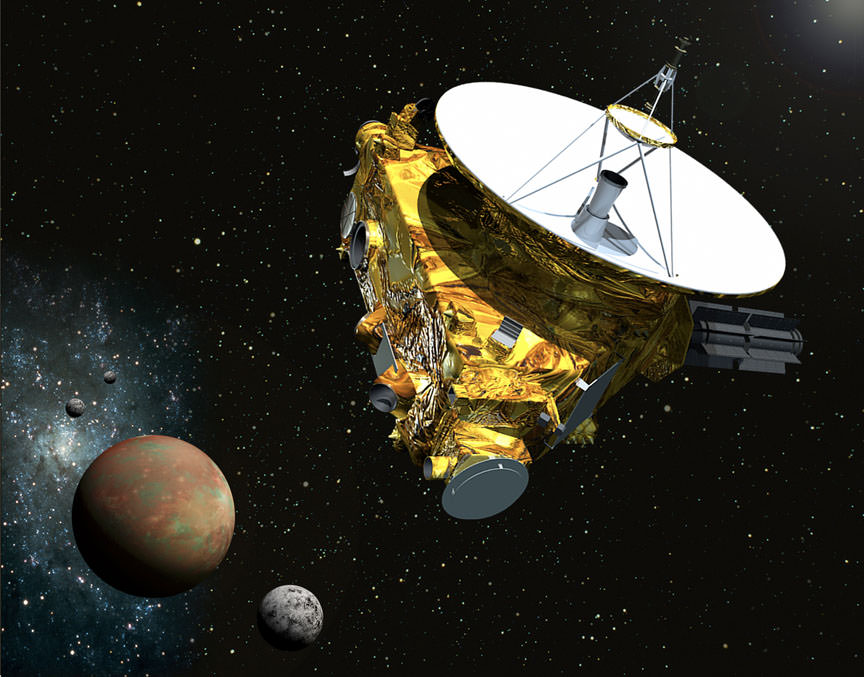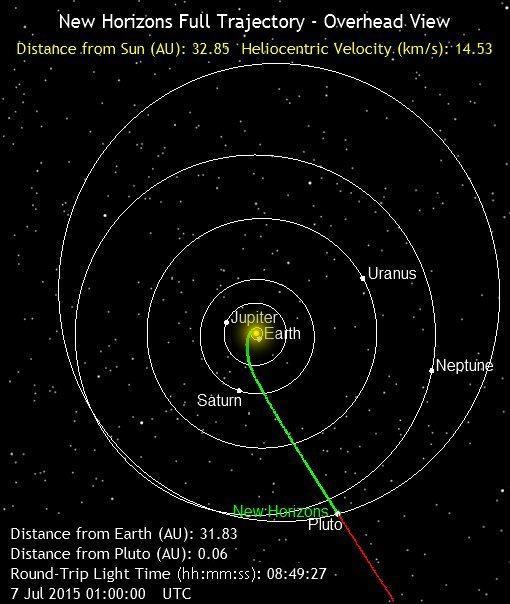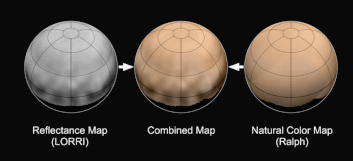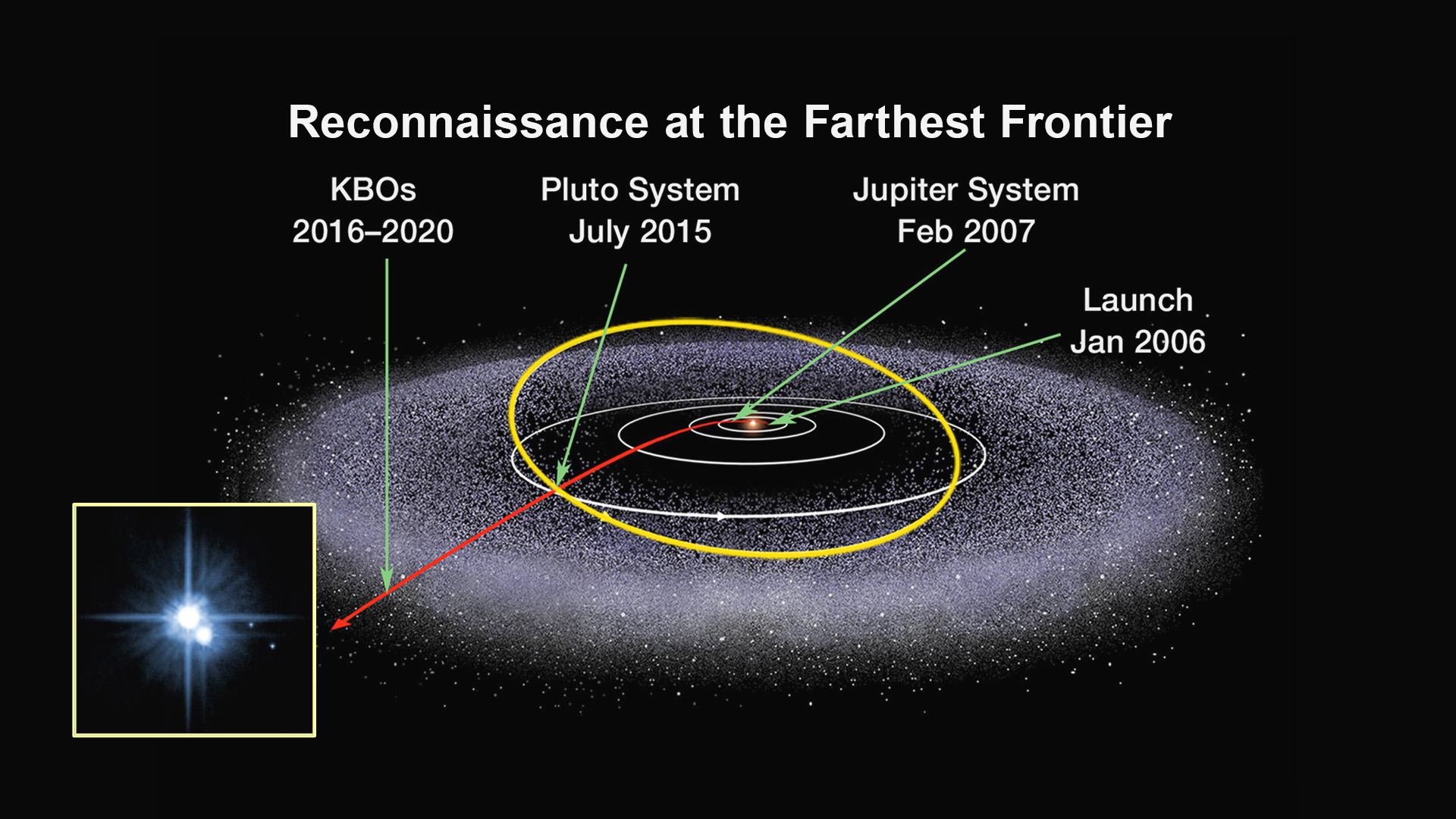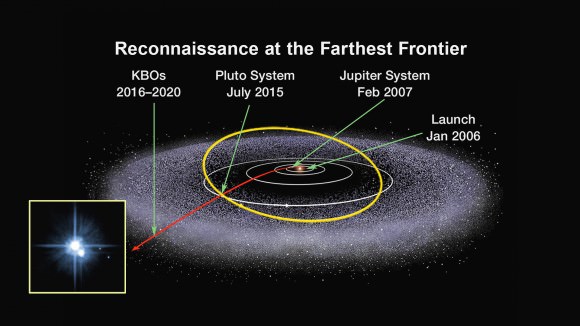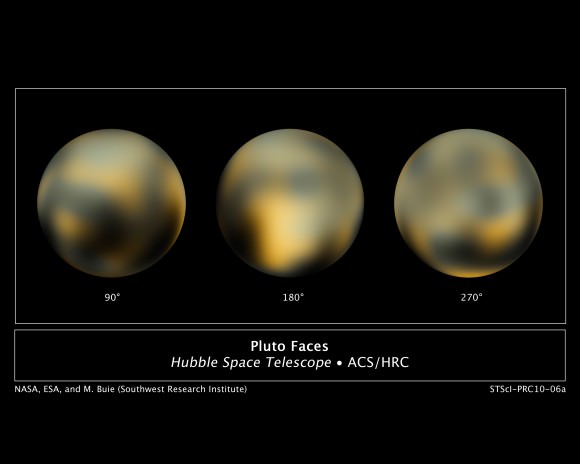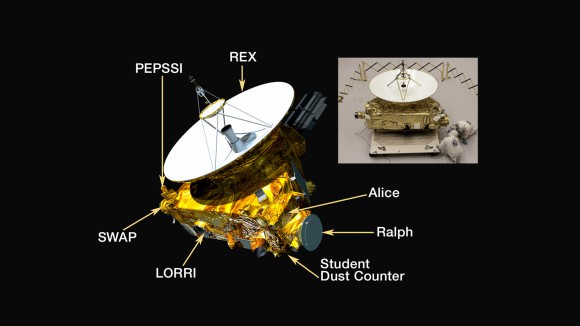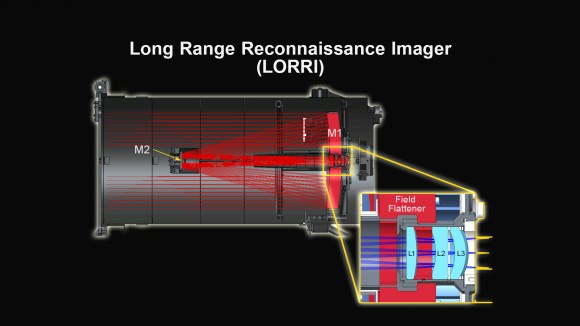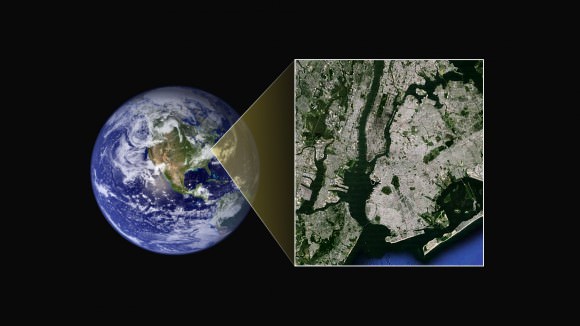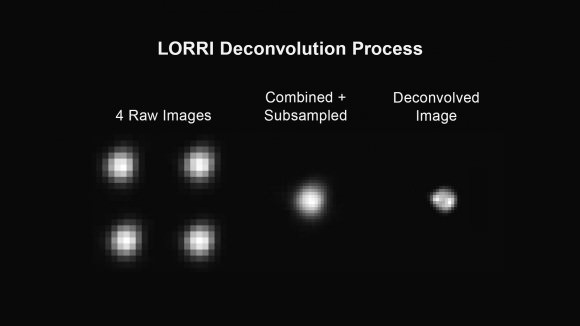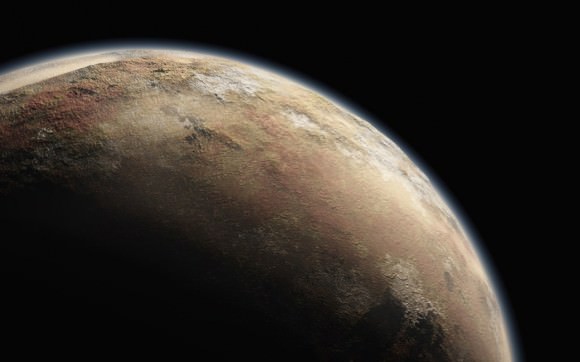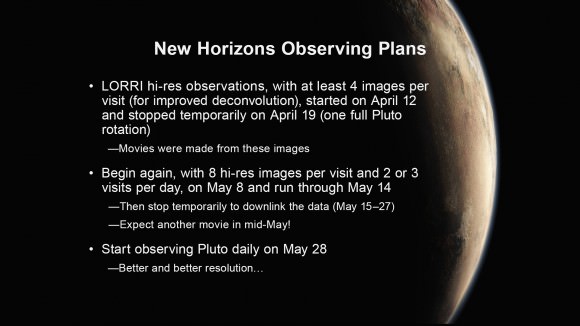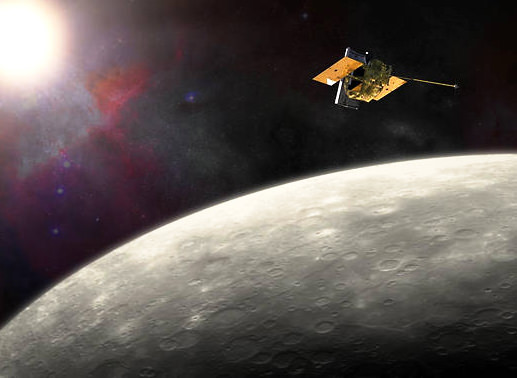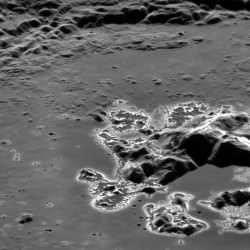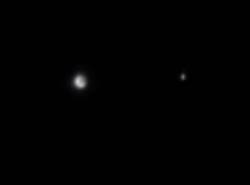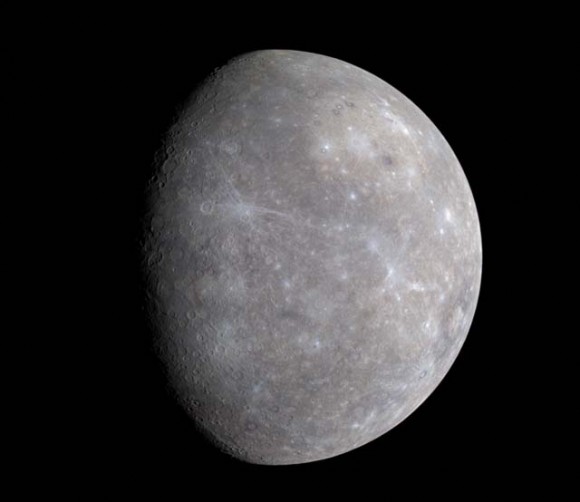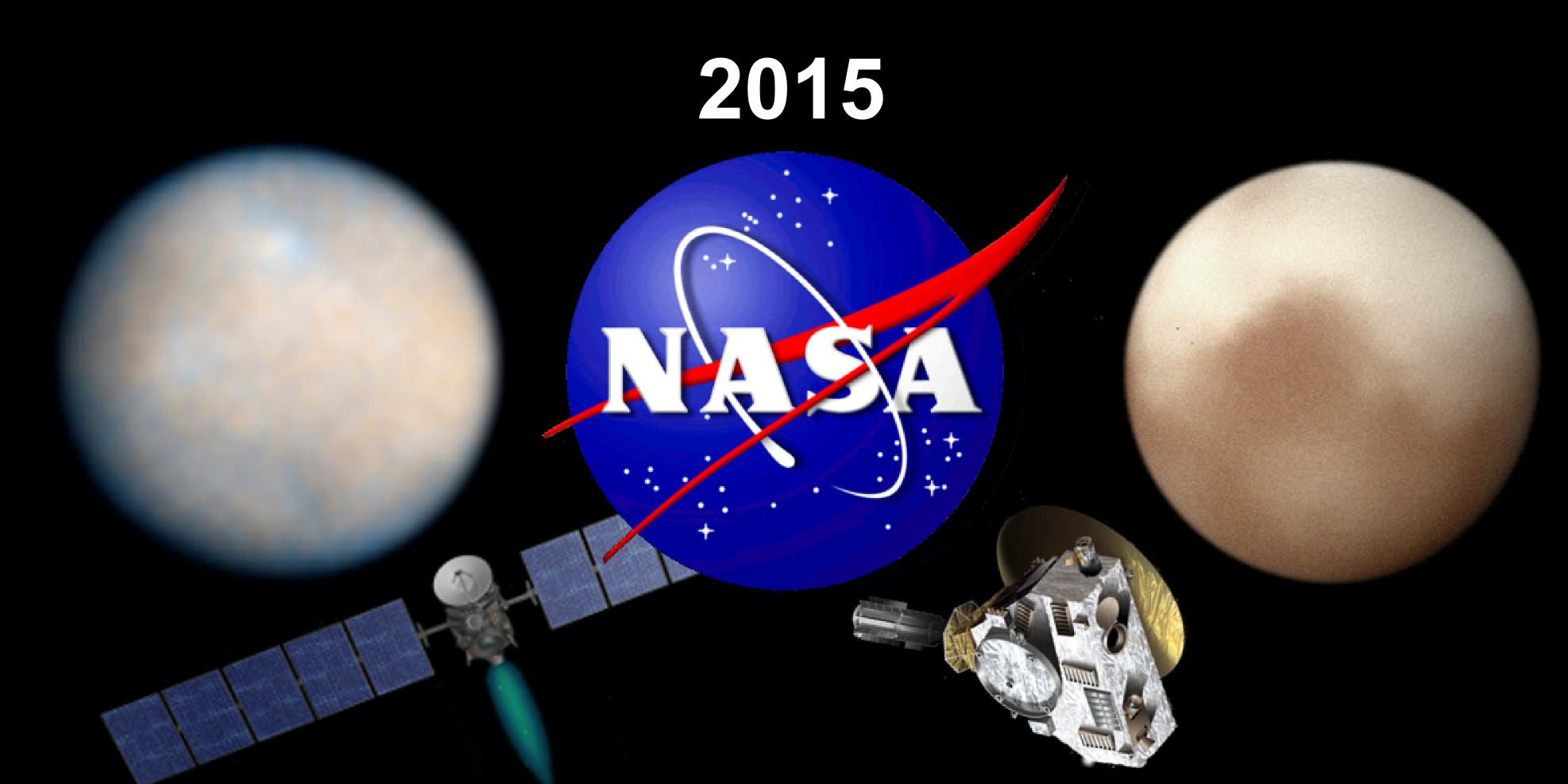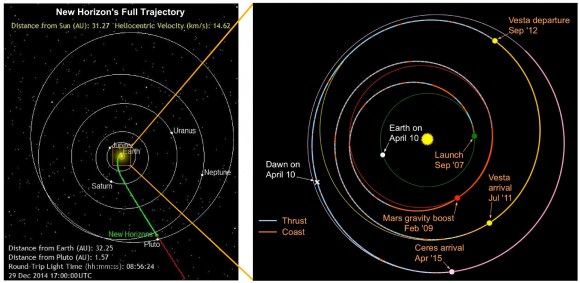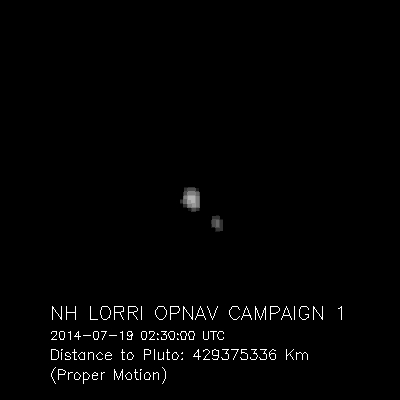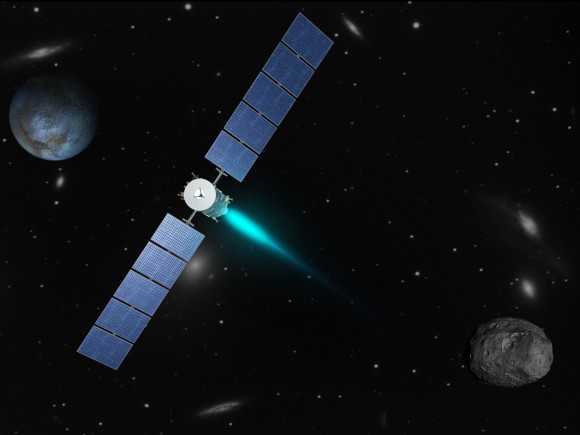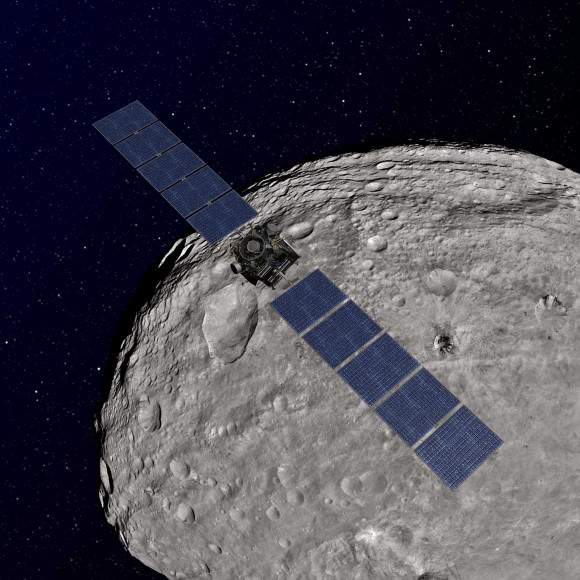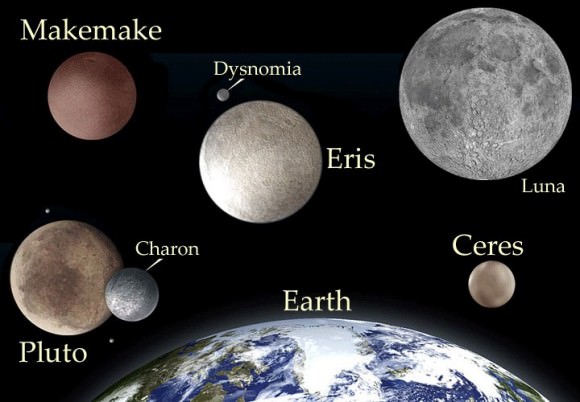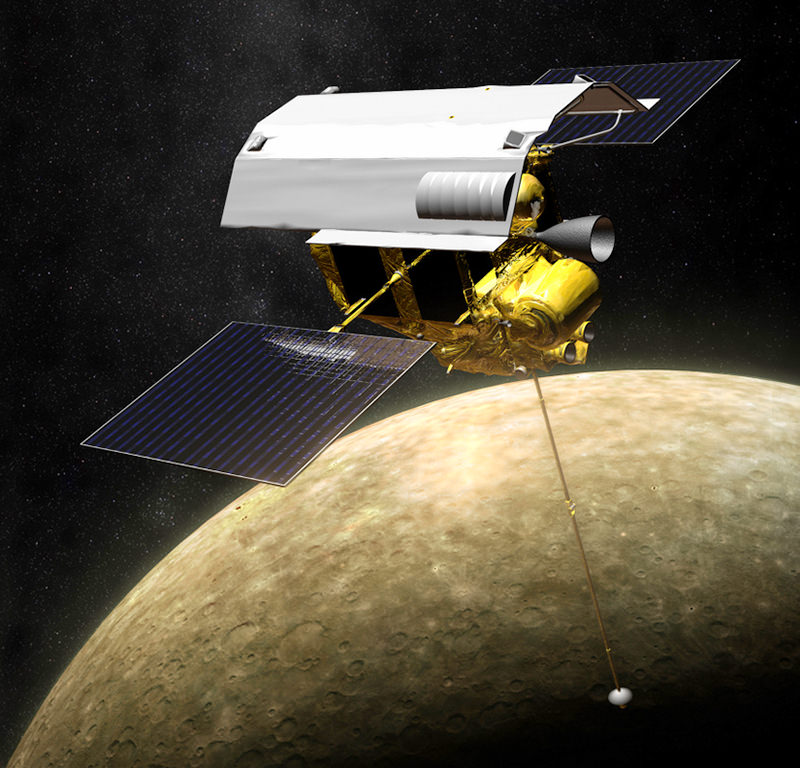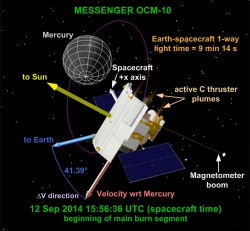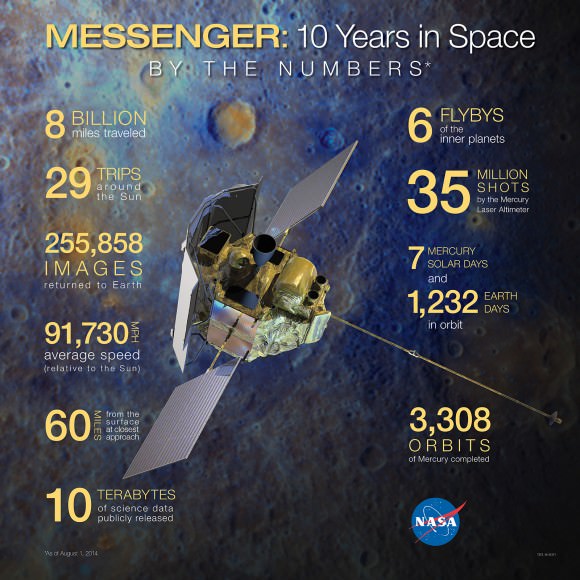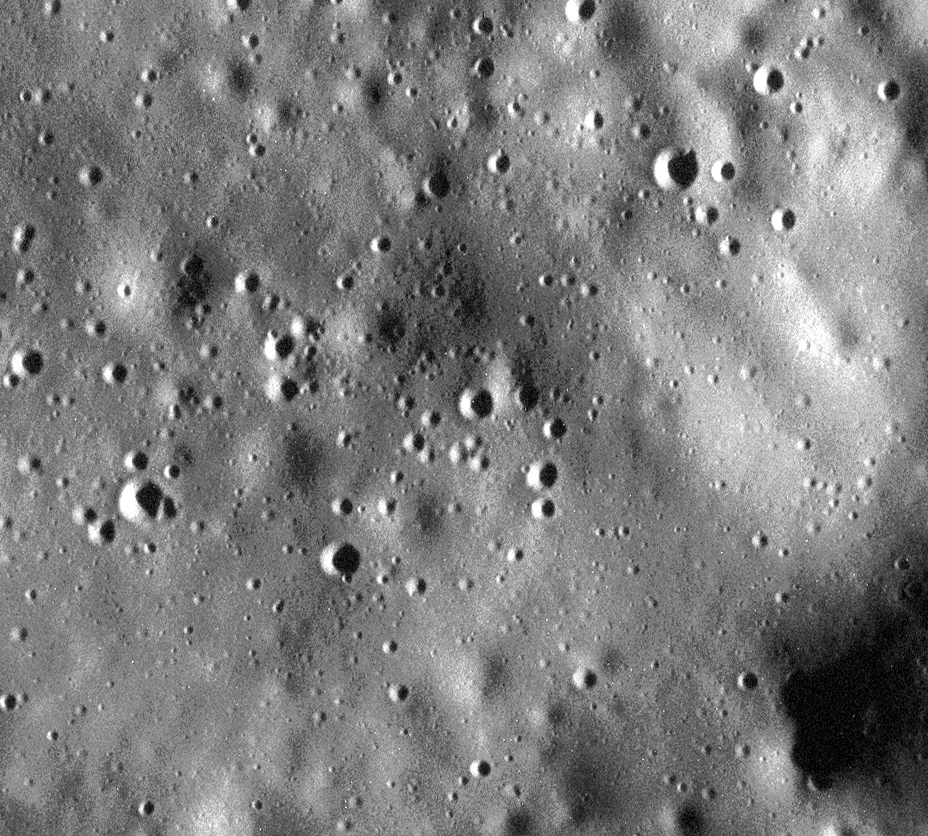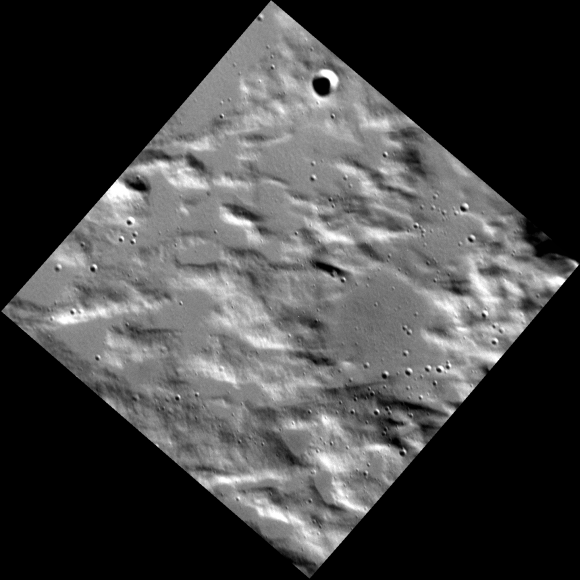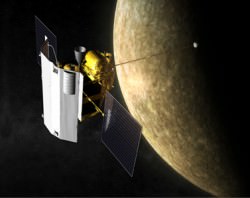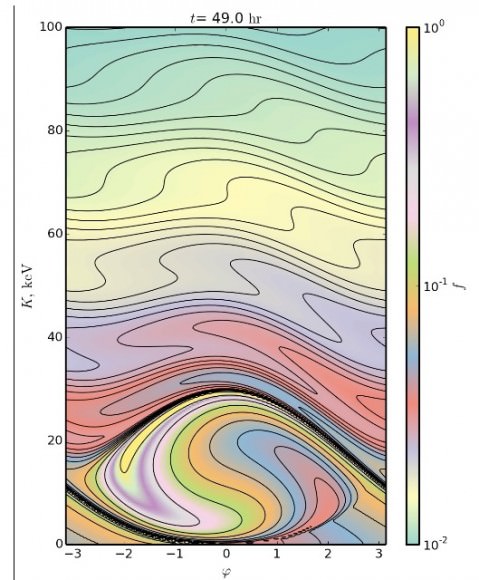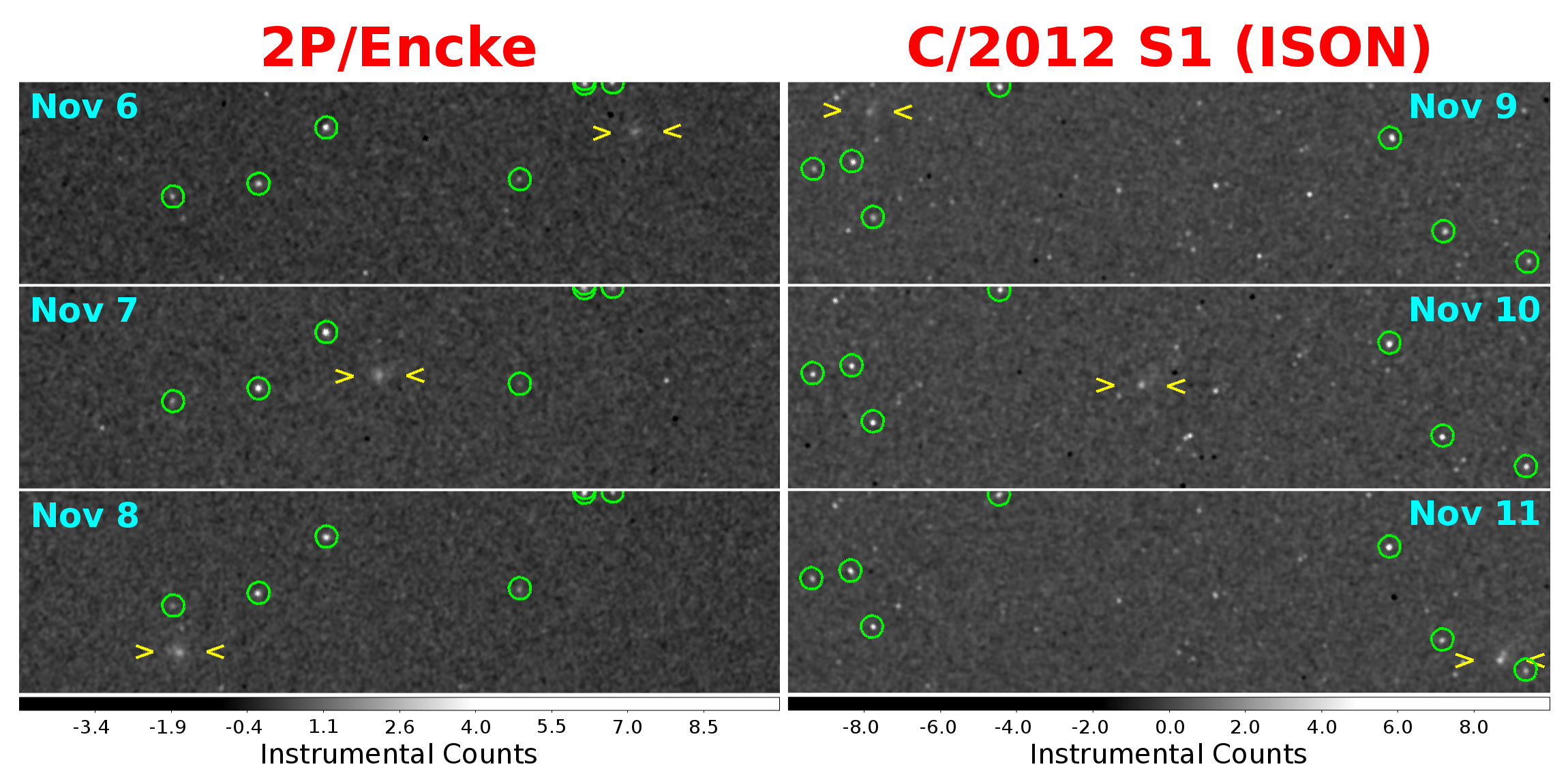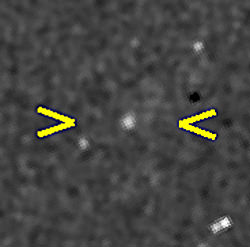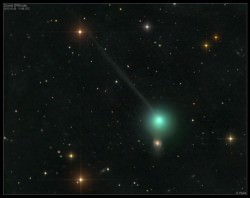New Horizons’ last look at Pluto’s Charon-facing hemisphere reveals the highest resolution view of four intriguing darks spots for decades to come. This image, taken early the morning of July 11, 2015, shows newly-resolved linear features above the equatorial region that intersect, suggestive of polygonal shapes. This image was captured when the spacecraft was 2.5 million miles (4 million kilometers) from Pluto. Credit: NASA/JHUAPL/SWRI
Story updated[/caption]
Today (July 11) we got our last, best and clearest look at a quartet of perplexing dark spots on Pluto’s far side from NASA’s New Horizons spacecraft – now just two days and two million miles (4 million km) out from history’s first ever up close flyby of the Pluto system on Tuesday, July 14.
The four puzzling spots (see above) are located on the hemisphere of Pluto which always faces its largest moon, Charon, and have captivated the scientists and public alike. Pluto and Charon are gravitationally locked with an orbital period of 6.4 days.
Over only the past few days, we are finally witnessing an amazing assortment of geological wonders emerge into focus from these never before seen worlds – as promised by the New Horizons team over a decade ago.
Be sure to take a good hard look at the image, because these spots and Pluto’s Charon-facing hemisphere will not be visible to New Horizons cameras and spectrometers during the historic July 14 encounter as the spacecraft whizzes by the binary worlds at speeds of some 30,800 miles per hour (more than 48,600 kilometers per hour) for their first up close reconnaissance.
And it’s likely to be many decades before the next visitor from Earth arrives at the frigid worlds at the far flung reaches of our solar system for a longer look, hopefully from orbit.
“The [July 11] image is the last, best look that anyone will have of Pluto’s far side for decades to come,” said New Horizons principal investigator Alan Stern of the Southwest Research Institute, Boulder, Colorado, in a statement.
The image of the mysterious spots was taken earlier today (July 11) by New Horizons Long Range Reconnaissance Imager (LORRI) at a distance of 2.5 million miles (4 million kilometers) from Pluto, and just released by NASA. The image resolution is 10 miles per pixel. One week ago it was only 40 miles per pixel.
They were first seen only in very recent LORRI images as Pluto’s disk finally was resolved and are located in a Missouri sized area about 300 miles (480 kilometers) across and above the equatorial region.
But until today they were still rather fuzzy – see image below from July 3! What a difference a few million miles (km) makes!
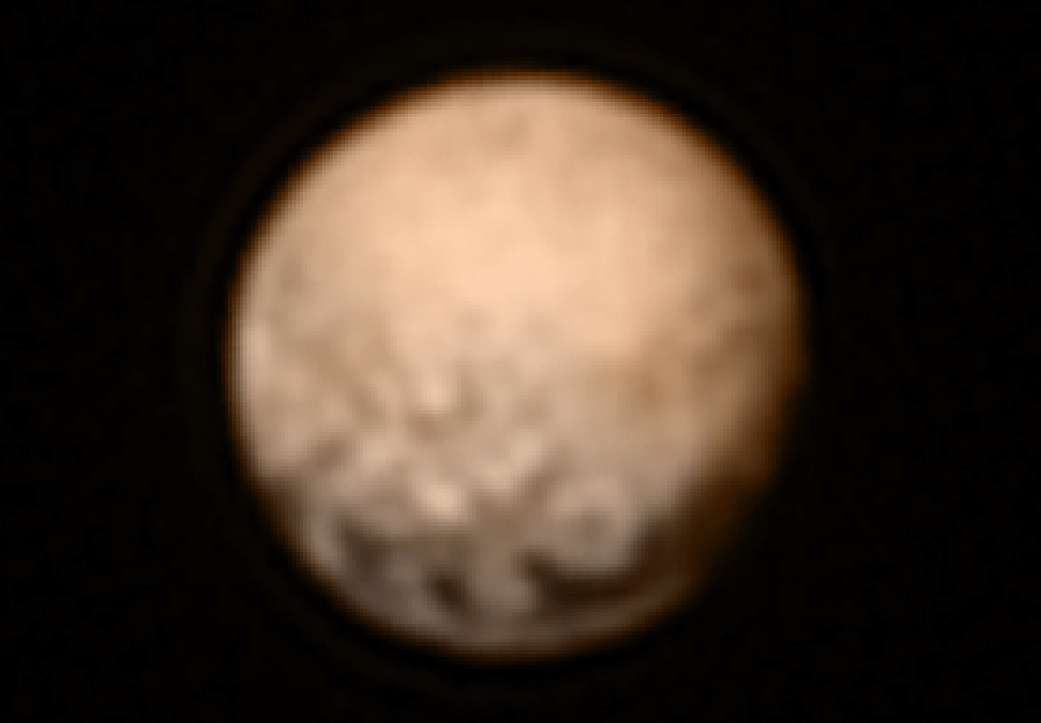
“The Pluto system is totally unknown territory,” said Dr. John Spencer, New Horizons co-investigator at today’s (July 11) daily live briefing from NASA and the New Horizons team.
“Pluto is like nowhere we’ve even been before. It is unlike anything we’ve visited before.”
Now, with the $700 million NASA planetary probe millions of miles closer to the double planet, the picture resolution has increased dramatically and the team can at least speculate.
Researchers say the quartet of “equally spaced” dark splotches are “suggestive of polygonal shapes” and the “boundaries between the dark and bright terrains are irregular and sharply defined.”
“It’s weird that they’re spaced so regularly,” says New Horizons program scientist Curt Niebur at NASA Headquarters in Washington.
However their nature remains “intriguing” and truly “unknown.”
“We can’t tell whether they’re plateaus or plains, or whether they’re brightness variations on a completely smooth surface,” added Jeff Moore of NASA’s Ames Research Center, Mountain View, California.
“It’s amazing what we are seeing now in the images, showing us things we’ve never seen before,” said Spencer.
“Every day we see things we never knew before. We see these crazy black and white patterns. And we have no idea what these mean.”
Answering these questions and more is what the encounter is all about.
Pluto is just chock full of mysteries, with new ones emerging every day as New Horizons at last homes in on its quarry, and the planet grows from a spot to an enlarging disk with never before seen surface features, three billion miles from Earth after an interplanetary journey of some nine and a half years.
“We see circular things and wonder are those craters? Or are they something else,” Spencer elaborated.
“We saw circular features on Neptune’s moon Triton that are not craters. So we should know in a few days . But right now we are just having an awful lot of fun just speculating. It’s just amazing.”
Until a few days ago, we didn’t know that “the other Red Planet” had a big bright heart and a dark ‘whale-shaped’ feature – see my earlier articles; here and here.
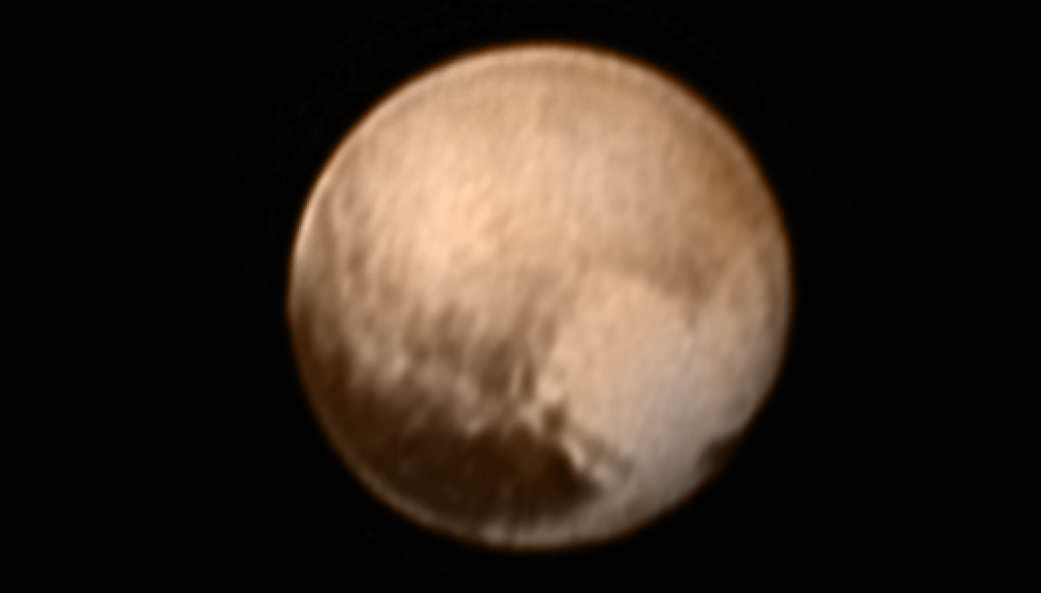
“When we combine images like this of the far side with composition and color data the spacecraft has already acquired but not yet sent to Earth, we expect to be able to read the history of this face of Pluto,” Moore explained.
New Horizons will swoop to within about 12,500 kilometers (nearly 7,750 miles) of Pluto’s surface and about 17,900 miles (28,800 kilometers) from Charon during closest approach at approximately 7:49 a.m. EDT (11:49 UTC) on July 14.
The probe was launched back on Jan. 19, 2006 on a United Launch Alliance Atlas V rocket on a 9 year voyage of over 3.6 billion miles (5.7 billion km).
Pluto is the last of the nine classical planets to be explored up close and completes the initial the initial reconnaissance of the solar system nearly six decades after the dawn of the space age. It represents a whole new class of objects.
“Pluto is a member of a whole new family of objects,” said Jim Green, director of Planetary Science, NASA Headquarters, Washington, in today’s live Pluto update.
“We call that the Kuiper Belt. And it is the outer solar system.”
New Horizons is equipped with a suite of seven science instruments gathering data during the approach and encounter phases with the Pluto system.
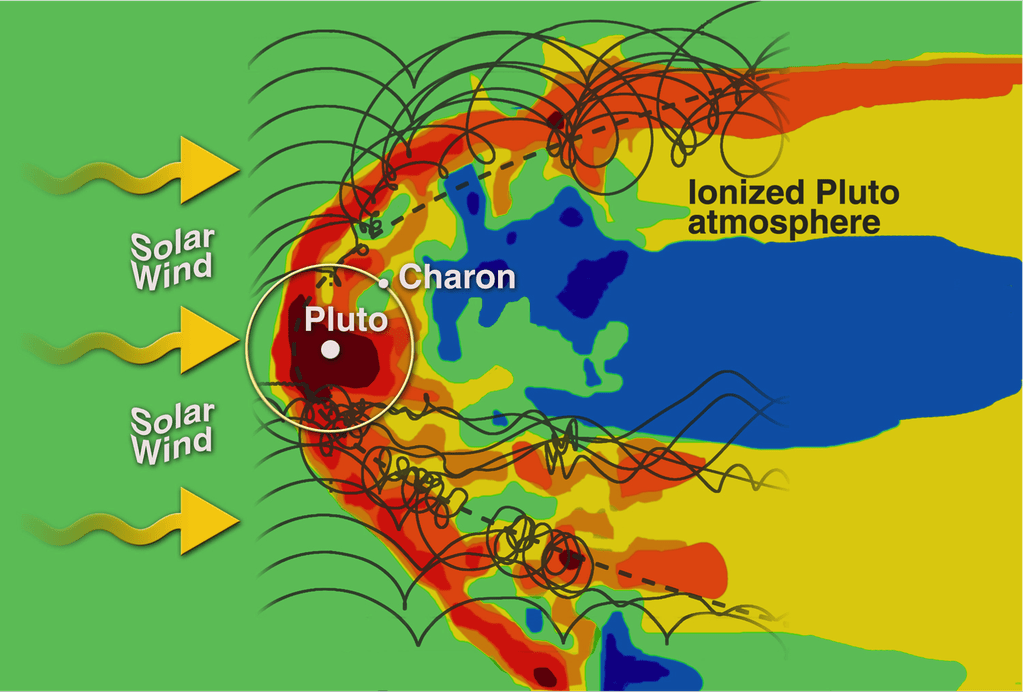
The New Frontiers spacecraft was built by a team led by Stern and included researchers from SwRI and the Johns Hopkins University Applied Physics Laboratory (APL) in Laurel, Maryland. APL also operates the New Horizons spacecraft and manages the mission.
Stay tuned here for Ken’s continuing Earth and planetary science and human spaceflight news.
